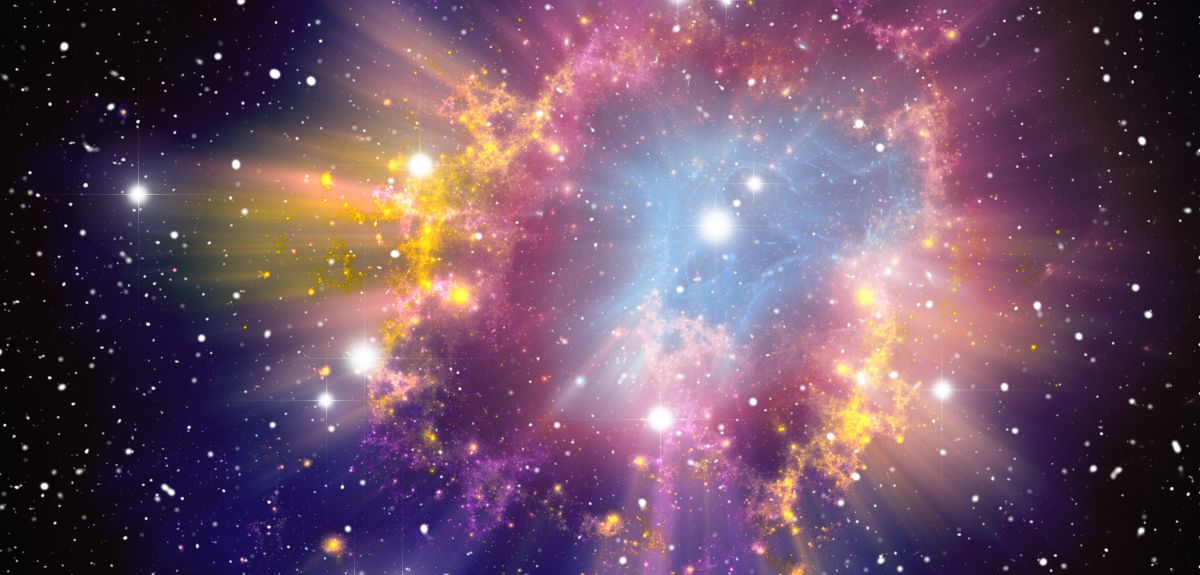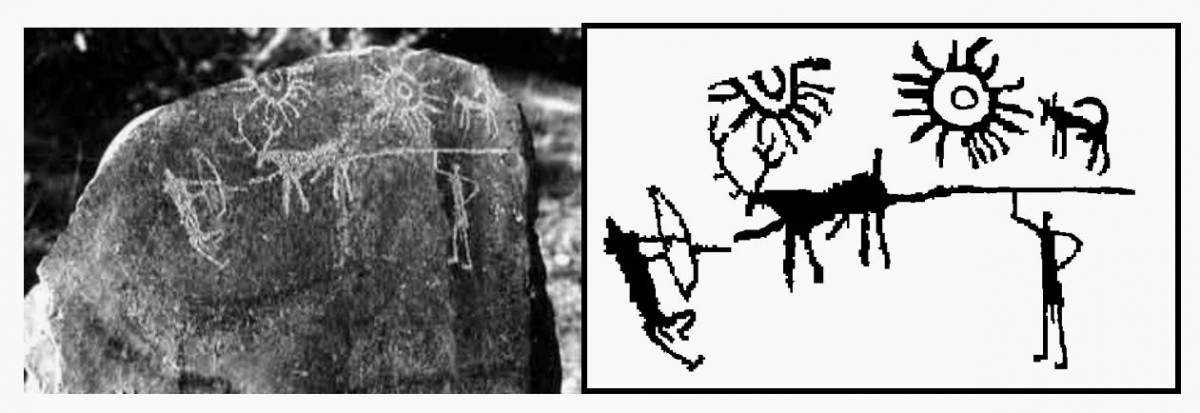
5000-year-old rock unearthed in India is the oldest evidence of Supernova in human history
The oldest noted description of the celestial event, a supernova was found in a rock art found in the state of Kashmir in India. This particular rock carving found near the Burzahama area dates back to 5000 years with pictures that show two brightly lit objects present in the sky with two hunters trying to hunt an animal which looks similar to a deer or antelope.
A supernova is a term assigned to the explosion of the star in the sky which burns for a very short duration during the last stage of its life radiating a huge amount of light. However, the same is not visible via the Milky Way in our galaxy as it gets covered due to dust. It occurs mostly when the star experiences a change happening in the core of the star as the star drains out of nuclear energy as its fuel. A major portion of the star’s mass starts flowing towards the core. After a certain period of time, the core increases significantly in mass which disables the star from properly handling its gravitational force. This exertion finally causes the star to explode with a massive emission of light.
The study of the ancient rock art was published in the month of December in the Indian Journal known as History of Science. The discovery was made by Mayank Vahia, Astrophysicist at the TIFR (Tata Institute of Fundamental Research) along with some colleagues. The astrophysicists confirmed that the find could be the oldest present record of the supernova.
This rock carving was found as a part of a rock-based wall with the carvings facing towards the inside of the site. The site has been estimated to be approximately from the time close to 2100 BC. According to studies, the researchers estimated that during the construction of this site, rock art of rock painting had lost its significance which is why it was used as a part of a new structure. As per records, the area near Burzahama had the earliest settlement approximately during the 4100 BC. This means the rock with the depiction of the supernova could have ranged between the years 2100 BC to 4100 BC.

The researchers tried to find out the reason why the drawing carried two distinctly drawn bright objects in the sky. The researchers indulged in further study to determine if the supernovas occurring in that era were significantly bright to be seen from the Earth. After initial analysis, the researchers estimated the art to be a depiction of some random hunting scene. However, after a close analysis, the researchers concluded that the figures drawn in the rock might be some star patterns. They might also be a moon in the night sky, the sun or a supernova.
The study concluded that either of the two objects visible in the night sky is either sun or moon because the two cannot be visible to the naked eye at the same time. This is because being so close to the Sun, the Moon might be in the new partial phase which means the brightness of the sun would overpower the same and reduce the visibility.
Then, the researchers investigated all the significant events around that time which led them to the explosion of supernova HB9 which occurred somewhere around 3600 BC. Further, the images of animals and humans in the drawing might represent more than a hunting scene. They might represent the constellations in the night sky. The human holding the spear could be a representation of the Orion while the one with the spear could be a representation of Pisces. The animal being attacked could be an accurate representation of Taurus while the second animal could accurately represent Andromeda or the immortal stallion Pegasus as per Greek mythology.
All these speculations led to the possibility that the rock art could be the depiction of the HB9 supernova. As per the conclusions derived from the study of the rock, the HB9 is the partially drawn object as the event would have been an irregular one. The second fully drawn bright object is considered as Moon the magnitude of the HB9 is similar to our Moon.
Vahia explained the study and said,” As per our estimations, this particular scene depicted in the rock is rather the accurate sky-map of the visible constellations as the supernova occurred for the very first time close to the Moon in the sky.” Vahia is also positive about the fact that the site hides many such depictions of the observable sky during the ancient era.


